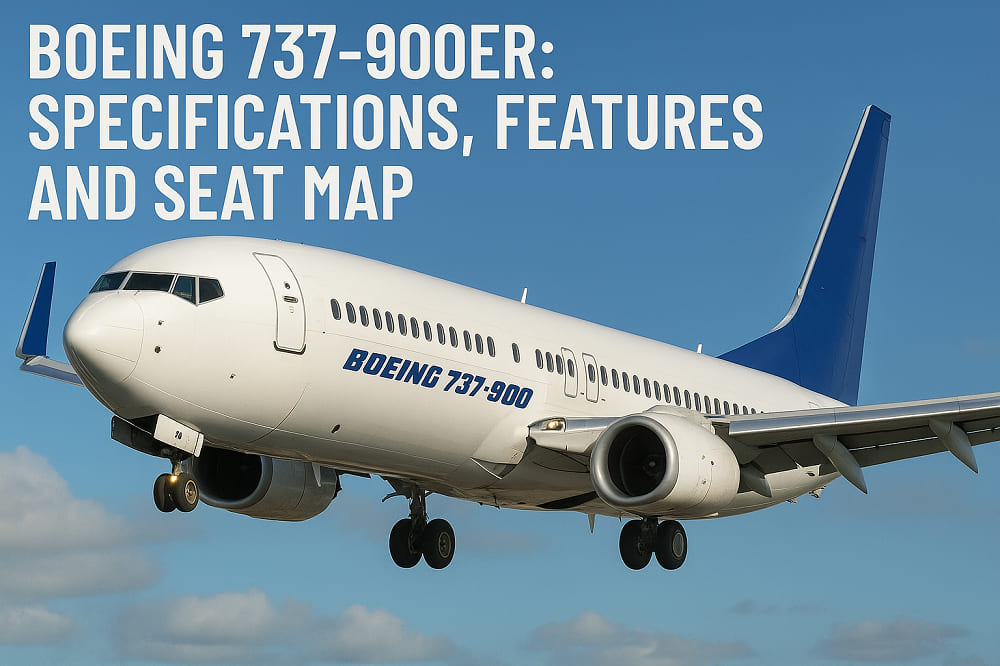Discover the remarkable Boeing 737-900ER, a game-changing aircraft that has revolutionized commercial aviation. This comprehensive guide explores its specifications, innovative features, and how it stands out in today’s competitive market.
Overview of the Boeing 737-900ER
The Boeing 737-900ER emerges as a crucial player in commercial aviation, effectively filling the void left by the Boeing 757-200’s discontinuation. This extended-range variant directly challenges the Airbus A321, offering airlines a versatile solution for their fleet requirements. Its impressive combination of capacity and range has made it a preferred choice for both short and medium-haul operations.
- Seating capacity: 180 passengers (two-class configuration)
- Maximum capacity: 220 passengers (high-density layout)
- Market position: Direct competitor to Airbus A321
- Primary use: Short to medium-haul routes
- Configuration flexibility: Adaptable to various operational needs
Introduction to the Boeing 737-900ER
As the longest variant in the 737 Next Generation series, the Boeing 737-900ER represents a significant evolution in aircraft design. Its enhanced capabilities combine increased passenger capacity with extended range, featuring aerodynamic refinements and structural improvements. The aircraft has demonstrated its versatility by successfully operating routes to diverse destinations including Tel Aviv, Stockholm, and Bucharest.
History and Development
The Boeing 737-900ER’s journey began in July 2005, responding to market demands for an enhanced 737-900 variant. The development timeline showcases Boeing’s engineering excellence:
- Official launch: July 2005
- First flight: September 2006
- Initial delivery: April 2007 (to Lion Air)
- Commercial service introduction: 2007
Specifications of the Boeing 737-900ER
Technical Specifications
| Dimension | Measurement |
|---|---|
| Wingspan | 35.80 meters |
| Length | 45.12 meters |
| Height | 12.60 meters |
| Engine Type | CFM56-7B turbofan (2x) |
| Engine Thrust | 117 kN each |
Performance and Range
The aircraft demonstrates exceptional performance capabilities with a cruising speed of 850 km/h, efficiently balancing speed with fuel economy. Its extended range capabilities enable airlines to explore new route possibilities while maintaining competitive schedules and optimal operational costs.
Features of the Boeing 737-900ER
Design and Comfort
The 737-900ER’s design emphasizes both efficiency and passenger comfort, featuring:
- Enhanced aerodynamics for improved fuel efficiency
- Larger overhead bins for increased storage capacity
- Modern LED lighting system for improved cabin ambiance
- Specialized seat configurations with unique characteristics:
- Seat 21D: Partially blocked underseat storage
- Seat 12A: Enhanced room in Comfort+ section
- Seats 15A and 16A: Solid and partial wall features
Technology and Innovations
The Boeing 737-900ER showcases advanced technological features that significantly enhance its operational capabilities. As part of the Next-Generation 737 family, this aircraft incorporates several key innovations:
- Blended winglet technology – reduces fuel consumption by up to 4% compared to earlier models
- Enhanced aerodynamic design for improved efficiency
- Advanced reliability systems for consistent performance
- Optimized fuel management technology
- Environmental sustainability features
Boeing 737-900ER Seat Map and Configuration
The Boeing 737-900ER delivers exceptional flexibility in seating arrangements, accommodating various airline business models. Its versatile configuration options include:
| Configuration Type | Passenger Capacity |
|---|---|
| Two-class layout | 180 passengers |
| Single-class layout | Up to 220 passengers |
Seating Layout and Capacity
The aircraft’s interior design maximizes space efficiency while maintaining passenger comfort. In comparison to the Boeing 737-800, which typically accommodates 160 passengers, the 737-900ER offers:
- Additional capacity for up to 20 more passengers
- Flexible business class section sizing
- Customizable economy cabin configuration
- Optimized space utilization
Passenger Experience
The Boeing 737-900ER enhances travel comfort through strategic seat placement and innovative cabin design. Notable seating features include:
- Interactive seat selection systems
- Exit row seats with specific storage configurations
- Comfort+ section with enhanced legroom
- Privacy-enhanced seats with solid or partial walls
- Varied window view options
CFM56-7 TR Hold Open Equipment
Airlines Operating the Boeing 737-900ER
Since its 2007 introduction, the Boeing 737-900ER has established itself as a versatile aircraft capable of serving diverse route networks. Its ability to partially replace the Boeing 757-200 while competing with the Airbus A321 has made it particularly attractive to airlines worldwide.
Major Airlines Using the 737-900ER
Several prominent carriers have integrated the 737-900ER into their fleets:
- United Airlines – extensive domestic and international operations
- Delta Air Lines – network efficiency enhancement
- Alaska Airlines – West Coast route network
- Lion Air – launch customer and high-density configuration operator
- Turkish Airlines – extensive European and international routes
Global Reach and Popularity
The Boeing 737-900ER’s worldwide success stems from its operational versatility and efficiency. The aircraft serves diverse markets across multiple continents, demonstrating its adaptability in various operating environments and route structures. Its continued relevance in airline fleets worldwide reflects its successful design and operational capabilities.
Comparison with Other Aircraft
The Boeing 737-900ER occupies a distinctive position in the commercial aviation market, combining enhanced capacity with impressive range capabilities. This extended-range variant effectively bridges a crucial gap in Boeing’s lineup, serving as both a successor to the discontinued Boeing 757-200 and a direct competitor to the Airbus A321.
| Performance Aspect | 737-900ER Characteristics |
|---|---|
| Market Position | Medium-haul route specialist |
| Range Capability | Optimized for medium-distance routes |
| Efficiency | Higher than wide-body aircraft for specific routes |
Comparing the 737-900ER with Other Boeing Models
Within the Boeing family, the 737-900ER represents a significant evolution in aircraft design. Compared to its predecessor, the 737-900, this extended-range variant offers enhanced capabilities and numerous improvements:
- More powerful and efficient engines than earlier 737 models
- Enhanced wing and tail section designs
- Modernized cockpit systems
- Extended range capabilities
- Improved fuel efficiency compared to the 757-200
Advantages and Disadvantages
The Boeing 737-900ER offers several compelling advantages that have contributed to its market success:
- Extended range capabilities for challenging routes
- Superior fuel efficiency through advanced engine technology
- Lower operating costs for airlines
- Simplified crew training due to commonality with other 737 models
- Streamlined maintenance procedures
However, the aircraft does present certain limitations. These include higher noise levels compared to newer models and a narrower fuselage that can feel more confined than alternatives like the Airbus A321, particularly in high-density configurations. Despite these considerations, the 737-900ER maintains its strong market position through its balanced combination of efficiency, capacity, and range capabilities.
Read more:
- Boeing 707: History, Features, and Impact on Aviation
- Boeing 777: Features, Specifications, and Insights
- Boeing 737 Max: Latest Updates and Safety Information
- Boeing 737-900: Specifications, Features, and Seat Map
- Boeing 717: Specifications, Features, and Flight Experience
- Boeing 767: Specifications, Features, and Insights
- Boeing 737-700: Features, Specifications, and Seat Map
- Boeing 787-9: Features, Specifications, and Insights
- Boeing 767-400: Specifications, Features, and Seat Maps
- Boeing 777-200: Specifications, Features, and Seat Map
- Boeing 747-400: Features, Specifications, and History
- Boeing 757-300: Specifications, Features, and Seat Map

